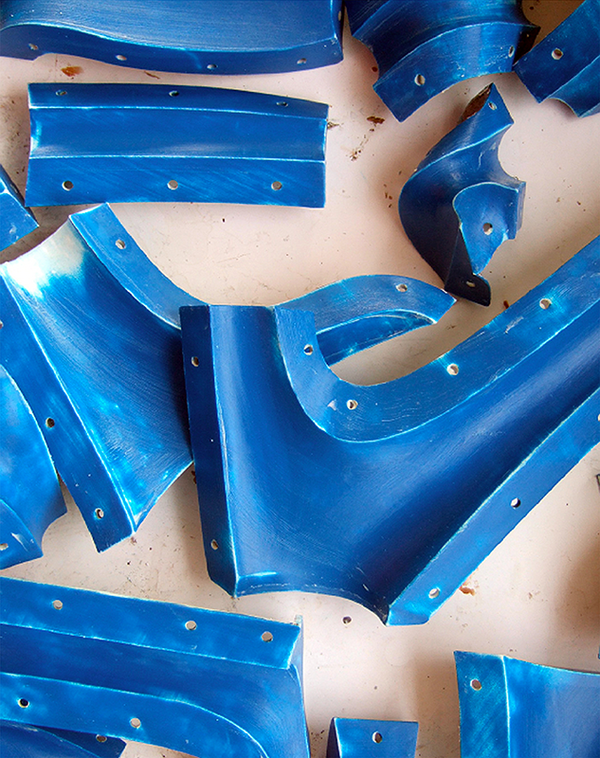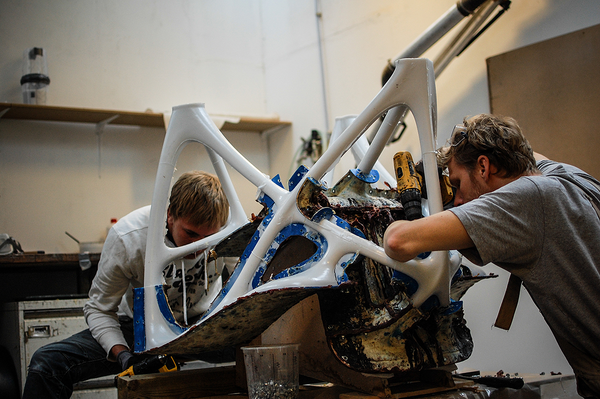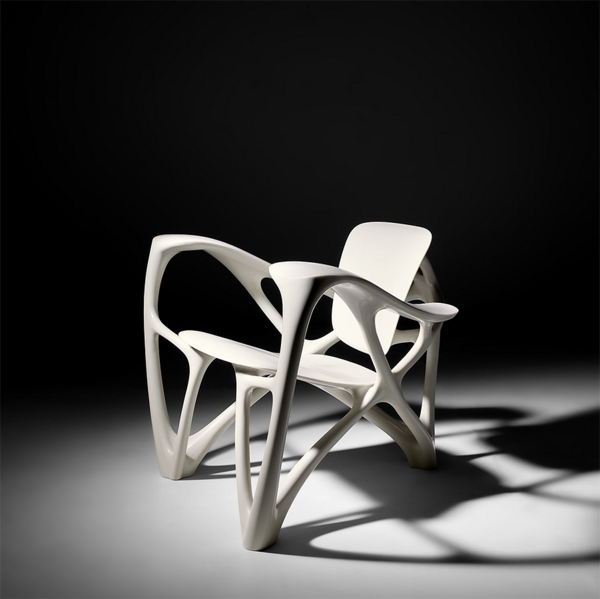Joris Laarman, 'Bone' armchair, 2007. Design London.
At the inception of Joris Laarman's ‘Bone’ armchair is the fascinating research on the growth of trees and bones. Both efficiently optimize their mass quantity at specific points, in function of where strength and support are required. This principle was also at the heart of the dynamic digital tool created by German engineer Professor Lothar Harzeim and Adam Opel GmbH, which mimicked these growth patterns to improve car parts production. For Laarman, this software "opened up an entire world of possibilities" and compelled him and his Netherlands-based studio Joris Laarman Lab to develop the ‘Bone Furniture’ series.
The remarkable functionality of the software’s algorithm when applied to furniture design is that it eliminates unneeded material without weakening the objects. In the initial projection stage, mass is removed from a block of virtual material out of which the load bearing parts of the armchair are also carved out. This digital sculpting informs the construction and appearance of the piece well before it comes to life.
In the present lot, the tangible outcome of this process manifests as a beautiful and efficient web of negative space throughout the armchair. Laarman describes this intelligent process as a marked shift from the industrial era into the digital era: "Industrial times and modernist pioneers were all about assembly and standardised parts in a geometric form language dictated by the limitations of industrial machines. In our digital era, however, we are no longer bound by these limitations. With digital design and fabrication tools we can create smarter customized forms that are much more complex."

Close-up of the components of the armchair’s 91-part mold. Photo: Joris Laarman Lab.
In awe of the possibilities afforded by technology, Joris Laarman Lab chose to cast the present lot in a single piece from a 3-D printed 91-part mold. The armchair is a successor to the paper and aluminum models all of which had their own challenges. This piece too was a result of experimentation. Having initially attempted to make it with ground old bone-china coffee cups mixed with casting resin, the result was not what they were expecting. They opted instead for carrara marble powder which gives the pieces its stunning porcelain-like smoothness.

The present model armchair being removed from its mold. Photo: Adriaan de Groot.
By using as little material as possible and as much as necessary, the ‘Bone’ armchair is an ode to the complexity of science which can be harnessed to create an at once aesthetically minimalist and materially imposing object. In the designer’s words, "[O]ur digital age makes it possible to not just use nature as a stylistic reference, but to use the underlying principles to generate shapes just like an evolutionary process."
As a recognition of Laarman’s ground-breaking design process, this model chair is part of the permanent collection of the High Museum of Art, Atlanta.

The present model armchair being removed from its mold. Photo: Adriaan de Groot.
Recommended Reading
